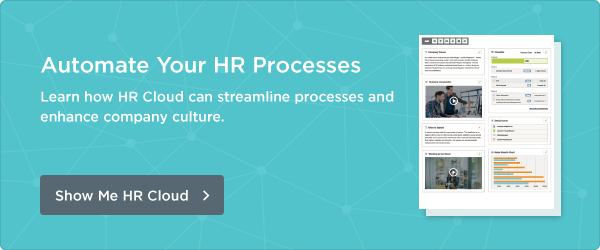
 Try
Out
Our
Try
Out
OurEmployee Engagement Software For Free

#NOTATSHRM14 or just impossible to catch every session? From an HR technology perspective, there were some great take-away points we didn’t want you to miss out on, so we compared notes, reviewed the #SHRM14 hashtag and asked some of your colleagues what was most relevant to them. Here are the top 3:
1. Make the Business Case for HR Technology
It’s not easy approaching senior leadership with a request for money…for anything. Budgets are created each year and it can be difficult to move funds around to pay for something that on the surface seems tricky to justify. But Joe Rotella for Delphia Consulting shared how get started during his SHRM14 presentation, “Technology Meets HR; Selecting and Justifying the Right Solution.”
A business case is a structured proposal for business improvement that functions as a decision package for organizational decision makers. It includes an analysis for business process performance and associated needs or problems, proposed alternative solutions, assumptions, constraints and a risk-adjusted cost-benefit analysis.
An important aspect to any business case is an ROI review of the intended purchase request. Your CFO will need to know: A- Why do we need a new system? B- Where is the money going? C- What kind of results are expected and how quickly will we see a change?
To help you break out ROI, piece by piece, Rotella walks you through the finer points:
ROI is measured in terms of a “payback period.” It is the amount of profit or savings your business will realize from the investment in a new HR technology. Let’s say that your software choice costs $500 a month to operate…the total purchase price is $11,000. To determine ROI, you calculate $11,000/$500 = 22. Your solution purchase has a payback period of 22 months.
One additional item to consider: the ROI on an onboarding system should also include intangibles such as employee loyalty, engagement and retention. Your CFO is interested in dollars, yes…however, these intangibles give the complete picture of why selecting the right HR technology for your organization is so critical.
2. Buy What You Need
Clarifying your business needs is the first step to selecting an HR software solution followed by product research. Consider the following vendor selection tips, shared by Trish McFarlane and Steve Boese during their presentation at SHRM14, “What Did that HR Tech Salesperson Say?”
• Capability- will it last for the next 3 to 5 years? Or, will you need regular upgrades and tweaks that cost you more than the initial investment?
• User Experience- is it easy to use? Will people want to use it? If no one uses it, it’s not useful.
• Price and ROI- be sure to factor in all costs and benefits. Sometimes we fail to show all steps in the process and the price points associated with each. Dollars can get lost in the shuffle and you don’t want to go back to your CFO asking for additional funds.
• Technological Fit- does the proposed purchase work for your organization and processes?
• Cultural Fit- so important. Cooperating with your vendor is the key to a successful implementation, training program and ongoing support. Your prospective vendor needs to fully understand what you’re trying to accomplish. You need a vendor you can work with side-by-side. It’s a partnership.
3. Get in the Cloud
Cloud based technologies are rapidly improving how, where and when we work, allowing more transparency and ease of use for all employees. It provides the best opportunity for increasing employee engagement and building a strong culture that enhances your employer brand. The cost benefits are amazing when you consider the following:
• Data storage is no longer on-site at your location, meaning there are lower up-front costs and less time spent determining how to handle pricey upgrades and the purchase of additional equipment.
• The cloud enhances social collaboration. It’s easier to share data, collaborate on projects, and build a culture of innovation. No longer are we confined to space, departments or “silos”.
• Access to data keeps everyone in the loop. Instead of being trapped by layers and layers of reporting, we can grab information at any point in time to gain a better understanding of where the gaps are, where we are succeeding and crowd source for new ideas and feedback.
Keep Reading
Benefits of Having a Company Intranet
Company intranets have been a part of corporate life since the mid-'90s. But in the last
Top 8 Workvivo Alternatives for 2024
Meta recently announced that it is shutting down its employee communications tool








